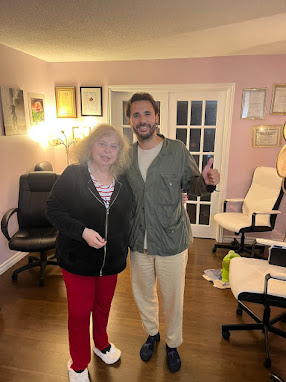Vocal Science… Are you “Out of the Circle” Figuratively (or not) Speaking…?
“What do you mean by that”, you, my reader, may ask?’
To explain better, I first will give you an example concerning figure skating, which will be very-much-so related to our topic on voice mechanics down the road.
I think, by now, a lot of you know that I am a big fan of figure skating (and ballet for that matter); and in my childhood and adolescence, I was taking skating for many years and taking it very seriously. Given that, I know a lot about it, even though that I did not become a professional figure skater myself (to my dismay and biggest disappointment).
This was obviously an unfortunate accident.
The fact is, since we know that any physical material body travels in a circular direction employing vertical, horizontal and central parameters, the very complicated ice jumps naturally consist of double, triple or quadruple circles. Also, a few years ago, our very own Canadian Skater of all times, Elvis Stojko, also stepped out of the quad-jump and thus, unfortunately, did not become an Olympic champion.
In order to achieve successfully (land) such complicated jumps as a triple axels or quads, the skater has to take off of the ice (not with the ice), so that the height of the jump will permit three or four revolutions.

Similarly, the vocalist should take off of the vocal cords and lift the sound to the different set of muscles; getting there while winding the sound-circles relatively, respectively and prospectively to his/her height, weight and the central line of the body. If the singer will lose the prospective of the center or under-rotate those circular-shaped syllables and vowels, he/she will most likely get out of tune, and most likely, will begin to hurt his/her own vocal anatomy.
When I was developing the Vocal Science method, I used my extensive knowledge of figure skating and ballet art. There are a lot of references to that in my book “Vocal Science – Flight to the Universe”, and also many of my blogs contain the same kind of references.

Kin-aesthetically, the person has to be able to feel it and be able to retain the feel of it.
Once the brain accepts the new modality of a new behavior (so to speak) and it is able to connect to one’s motor skills, the sound will be coming out upon design and command and as an actual “printout” of the new “software” which was instilled in the person’s “human computer”, provided that the person was able to “press the right button” for that “printout” to be extracted onto the surface.Obviously, to achieve such a result, the person in question would definitely need professional help first; and then he/she will be able to “navigate” the sound of the voice to its aimed and desired destination, while concurrently, no doubt, avoiding any kind of a vocal injury.


